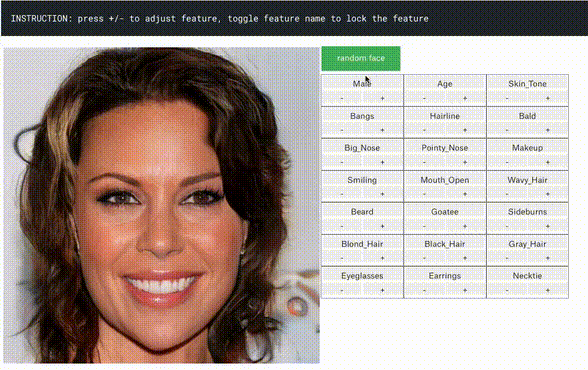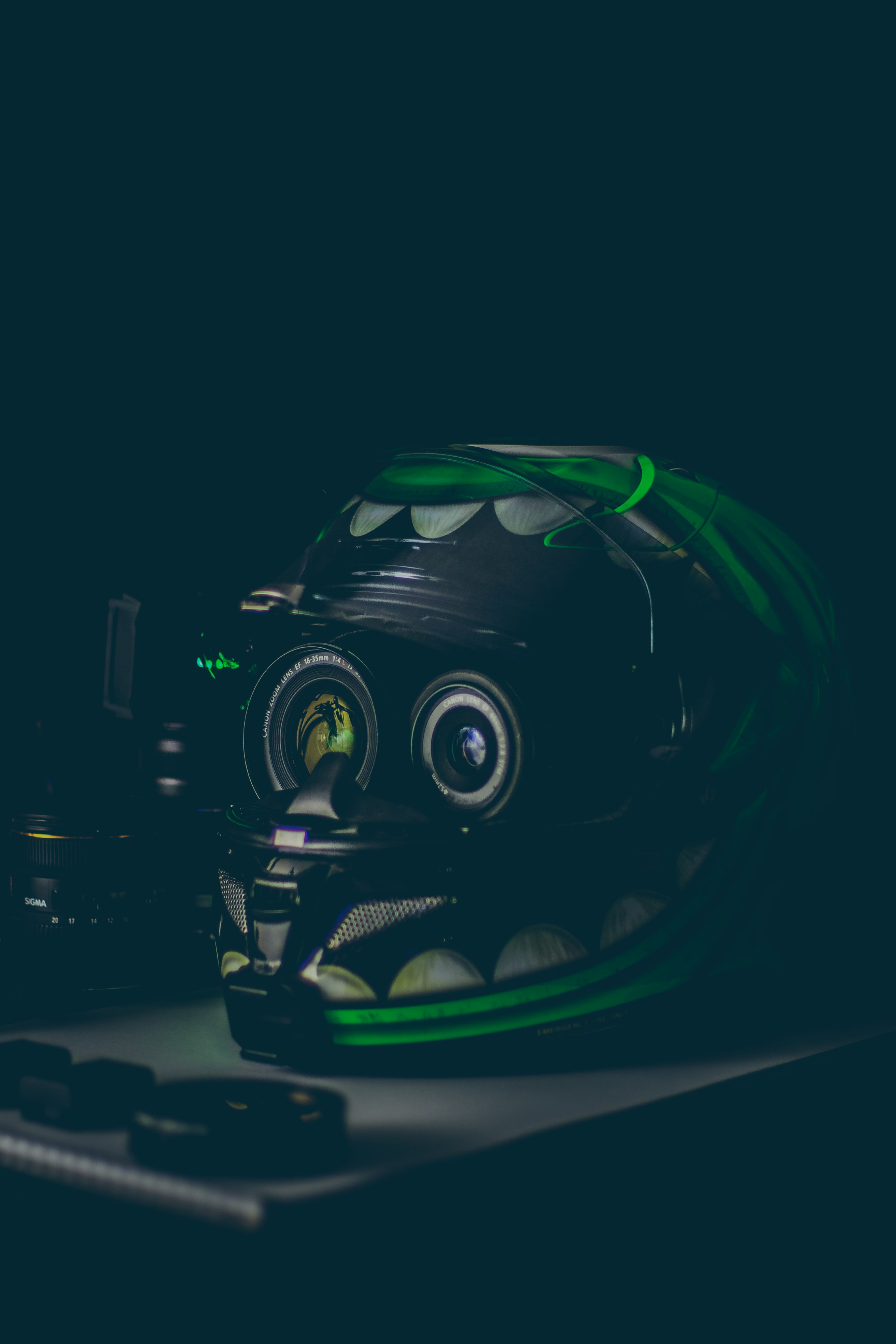AI applications for the digital designer
Author
Roel Jansen
Published
29 November 2019
Reading time
6 minutes
Artificial intelligence (AI) has been one of the most discussed topics at conferences for a few years now. Much is written about it inside and outside the design world. In addition to the fact that tech companies use AI to improve their services, there are also more and more AI applications that digital designers can use in their work. In this article you will find ten attractive examples of these applications.
In this article, AI is used as an umbrella term for ‘self-creating’ applications, so applications that create something in the field of digital design, without human intervention. Some of the applications discussed below can be used immediately and I would recommend that you do so. Others are not public domain, but no less relevant.
1. Luban (Alibaba)
Luban (video) is an application of the Chinese technology company that uses AI to design different variants of banners. Luban has analyzed millions of Chinese advertisements. A user of this application only needs to provide the type of advertisement and the dimensions and the application does the rest.
 Luban (Alibaba)
Luban (Alibaba)
What can you use it for?
With applications such as Luban, you no longer need a visual design to create simple banner-like visualizations. The visual designer thus takes on the role of art director and only gives Luban parameters and then makes choices from different banners.
2. TL-GAN, StyleGAN and THISPERSONDOESNOTEXIST.com
TL-GAN en StyleGAN are applications to create images of fictitious people. Facial expressions or other facial features can be adjusted based on various settings. THISPERSONDOESNOTEXIST is a website where you see a new image of a non-existent person every time a web page is refreshed.

GAN
What can you use it for?
Imagine being able to put together a face that fits perfectly with the description of a persona. These applications are great for creating personas without having to use stock photos. You can also use them as placeholders for avatars or profiles in your wireframe or prototype. There is already a plugin for Sketch to use non-existent faces in your design.
3. Uizard
With Uizard you can convert paper sketches into a digital sketch. You can also convert paper sketches directly into front-end code. This application can therefore recognize an image and convert it into something that can be used digitally.
 Uizard
Uizard
What can you use it for?
Imagine being able to immediately convert the sketches you've made into wireframes in Sketch, without having to do anything yourself. That's literally what Uizard does. You can combine this with a design system, for example, so that everything is immediately made in the right style and with good components. By using an application such as Uizard, you as a designer can make iterations faster and you can also communicate more easily with front-end developers. If the code is good enough at least.
4. UIbot
With a single click you can change the layout of the user interface. You can do thousands of iterations of your design and change the colors, fonts, alignment and layout every time. In terms of content, nothing changes, only visual design. The application independently makes numerous visual explorations without you having to do anything yourself.
 UIbot
UIbot
What can you use it for?
UIbot allows you to create many different iterations of your design. You do not have to work out all variants in Sketch, but with one click you will see a new layout. You may even discover a variant that you would have never thought of yourself.
5. Ukit AI
Ukit AI analyzes a website and then creates a new version of it. The application looks at the source code and uses comparable sites as inspiration to improve the specified site.
 Ukit AI
Ukit AI
What can you use it for?
By having an application like Ukit AI analyse a website and create a new version of it, you can easily see what a visual change would do for a website. If this solves certain problems, you don't have to rearrange everything. Of course, this is especially true for simple sites. It is the designer’s task to look more substantively at the existing website.
It would be interesting if the user could set certain parameters for the new site, such as ‘minimalistic’, ‘cheerful’ or ‘colourful’. It now seems as if there is only one solution available, where as a user you may have certain requirements.
6. AI copywriter (Alibaba)
AAlibaba uses an AI-driven copywriting application. It claims to generate as many as 20,000 sentences per second. This application produces texts by looking at all kinds of other advertisements from Alibaba companies, such as Tmall and Taobao.
 AI Copywriter
AI Copywriter
What can you use it for?
Copy is a vital part of any user experience. An application like AI writer could help designers with the creation of copy in your design. So you can avoid having to use ‘Lorum Ipsum’ and get a suggestion or setup generated by this copywriting application. Ideally, a designer indicates what kind of copy is needed, and the application then generates suitable texts. For example by producing specific text for a FAQ section, based on the content of your existing site.
7. Components AI
Components AI is an online application enabling you to do iterations on parts of a visual design, like colour, shadow, and font. You can change parameters and lock them if needed. Subsequently, this application creates different variants. The more this application is used, the more it ‘learns’. As a result the suggestions it offers get better and better.
 Components AI
Components AI
What can you use it for?
With this application you can easily compare different variants of a certain component. This way you can quickly see combinations of colours or fonts, which help you decide. You don't have to take all kinds of actions in Sketch yourself, so you can easily and clearly generate new ideas. There is a plug-in available for Sketch called Bill UI. With this plugin you get design suggestions about components in your Sketch file.
8. RealEyes
RealEyes uses AI for user testing. Test users are shown images and give access to their webcam. The application analyzes what users think of the presented image based on various indicators like emotion and attention span.

RealEyes
What can you use it for?
AI is getting better at analyzing human emotions and actions. For example, an application such as RealEyes can independently analyze a design and provide clear feedback on data about this analysis. You could put this to good use for remote user testing without having to be there all the time.
9. Recognition
Recognition was the name of an AI-based exhibit at the Tate Britain museum. The application combined works of art that were formerly part of the museum collection with contemporary photography from the Reuters news service.
 Recognition
Recognition
What can you use it for?
AI could help designers find similar images of photography for a site. In addition, an application such as Recognition can be used to compare your design with similar designs.
10. Wix Advanced Design Intelligence
Wix builds websites independently, without programmers. Wix starts with a series of questions and then helps you choose templates. After the introduction, Wix creates a site filled with content. All sites have minor differences, so each side is made unique for each user. This is in contrast to templates from WordPress, for example.
Most people are familiar with a similar service, called The Grid AI. This service seems to have quietly faded away however. With Firedrop you can also have sites generated, and then make adjustments with a 'conversational user interface'.
 WIX
WIX
What can you use it for?
Wix is widely used for creating simple sites, such as online portfolios or small webshops. The websites that Wix creates are based on existing and well-visited sites. As a designer you can use Wix as a source of inspiration. You can quickly create different variants. Of course you can also use it to create your own portfolio.
Conclusion
The examples presented here are just a small selection. There are more interesting AI applications in the design field and the number is growing rapidly. Should we now be afraid that our work will soon be taken over by AI applications? I do not think so. What the above applications have in common is that they are self-learning from existing examples to create something. AI applications are primarily a tool for designers to quickly make iterations of a design. The creative mind of the designer is still needed to design something which is genuinely beautiful, original, relevant, and valuable.
In any case, it is exciting to see what AI is already capable of within our line of work. It is important and good to keep experimenting with these applications. In this way we gradually improve our understanding what AI could mean, and consider such applications as a kind of co-designer. Never on an assignment without them.
About the author

AI
Artificial Intelligence


